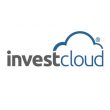No more cheerleaders and today’s need for ‘founder fit’
Taking in the dramatic shift in sentiment that has swept across the start-up world, including the recent eye-catching valuation write-downs from some of fintech’s high-profile favourites, today’s world seems a far cry from the high times of 2021.

There is simply no such thing as ‘easy money’ for founders anymore
When I consider how a younger, fresher-faced version of myself would feel if they were starting their career, I’m grateful for each of my 22 years of experience. Over that period I have experienced and learned from all the market’s ups and downs surviving the infamous dot.com bubble burst. Reflecting on both the good times and the hard knocks, I find myself doubling down on my belief in the essential value of ‘founder fit’.
As today’s market retreat is teaching us, investors have a responsibility to allow the time and resources to carry out proper due diligence, and refrain from over-promising the value they can bring to founders. Equally, when we talk to founders, we’d always advise them to take the due diligence process seriously, allowing sufficient time for not only potential investors to understand the company, but also for the founders to get to know their investors.
Regardless of how buoyant the market backdrop is, it’s important to remember this more measured, exacting process shouldn’t be regarded as a barrier to achieving a good founder fit for investors. Rather, it is typically the hallmark of an investor who is ensuring that they are fully prepared to roll up their sleeves if or when things get difficult. This approach frees both parties to go beyond short-term monetary focus and develop a relationship that surpasses being a friendly voice to founders, and instead form a worthwhile relationship.
The lead up to the gold-rush
Prior to 2020’s acceleration, founder-VC matchmaking operated along what had become quite a balanced, traditional process. VCs led with more than just their wallets, prizing the value of their guidance as well as their ability to sign cheques. Diligence processes took 6-8 weeks, or longer, with valuation deals reached with sizes and terms which were fair to both parties. For both sides, the large effort required to raise funds meant that there came a certain relief when a partnership could be made with minimum barriers to consider.
In 2020 and 2021, the floodgates of new investors opened. These investors not only included crossover funds, but also newly formed, relatively inexperienced, young VCs born in the 2010s and new to downturn markets.
Boosted by the confidence in the market, the growing race to complete partnership processes bypassed vital due diligence stages, as many founders ignored their investor’s capacity for guidance on top of capital. Understandably, founders became attracted to the promise of receiving high investments at outrageous valuations, receiving term sheets in days, not months, all without the hassle of due diligence.
The unavoidable problem faced by founders raising money during these gold-rush years is the risk of quickfire investors which do not bring any value to the company beyond funding. As soon as the market shifts from bullish to bearish, these hasty, inexperienced investors retreat from the market, now unable to follow-on their financing due to missing out on maintaining critical reserves.
Recalibrate
Today, our advice to founders starts with the message that you must recalibrate your fundraising strategy. There is simply no such thing as ‘easy money’ anymore. You need to take your time in considering investors, including extensive reference checking and significant due diligence processes. If this is done well, your cap table will be the correct mix of experience, aligning interests, deep pockets and hopefully, strategic support.
With a strong cap table, founders can manage their business to survive a colder market. Ideally, founders will be partnered with an experienced VC investor who has weathered storms before. However, if you do not have a crisis-experienced investor on board, founders need to be prepared for an upcoming longer period of very difficult market conditions for the next 18 to 24 months at least.
To do this, founders must self-critically review their position. Are you one of the handful of companies with a rock-solid business model that is breaking even or close to breaking even? If so, then you may ignore the advice below… But if not, you may find this advice useful.
Be self-critical
Founders need to evenly evaluate their business’ ability to weather economic storms. They must ask themselves, how strong is my investor base? Are investors able to fund us internally? When will we need to fundraise again?
Revisit your accounts with a fine-tooth comb, examining where you can cut costs and ensuring at least an 18-month run rate. If this is not possible, then your next move is to raise funds from your existing investors and start cutting your costs.
If existing investors are able to fund you, be sure to discuss convertibles or re-open your most recent equity round to achieve the required runway and prevent you going back on the market. It may not be an entirely comfortable process, but this kind of self-evaluation could produce enormous and essential benefits for founders.
Ingredients for a meaningful fit
When approaching investors in the next funding round, founders should be well equipped, having completed the self-evaluation above and recognised the importance of partnership beyond finance.
As in all strong, long-term relationships, there must be give and take. Be reasonable in terms of valuation and the amount of financing you ask for. Accept fair dilutions – the time when a pre-revenue company could get $10m on a $100m pre-money valuation is over.
Do your due diligence on your investors. Investigate and see if you can learn how they perform when times get difficult. Dig a little deeper and take input from their current and past portfolio founders.
For investors and founders to achieve a meaningful fit, they need to allow sufficient time for both sides to get to know each other. With dark skies ahead, it’s vital that founders learn from the mistakes of others, fully understand the health of their business and the full potential value each investor brings with them.











































